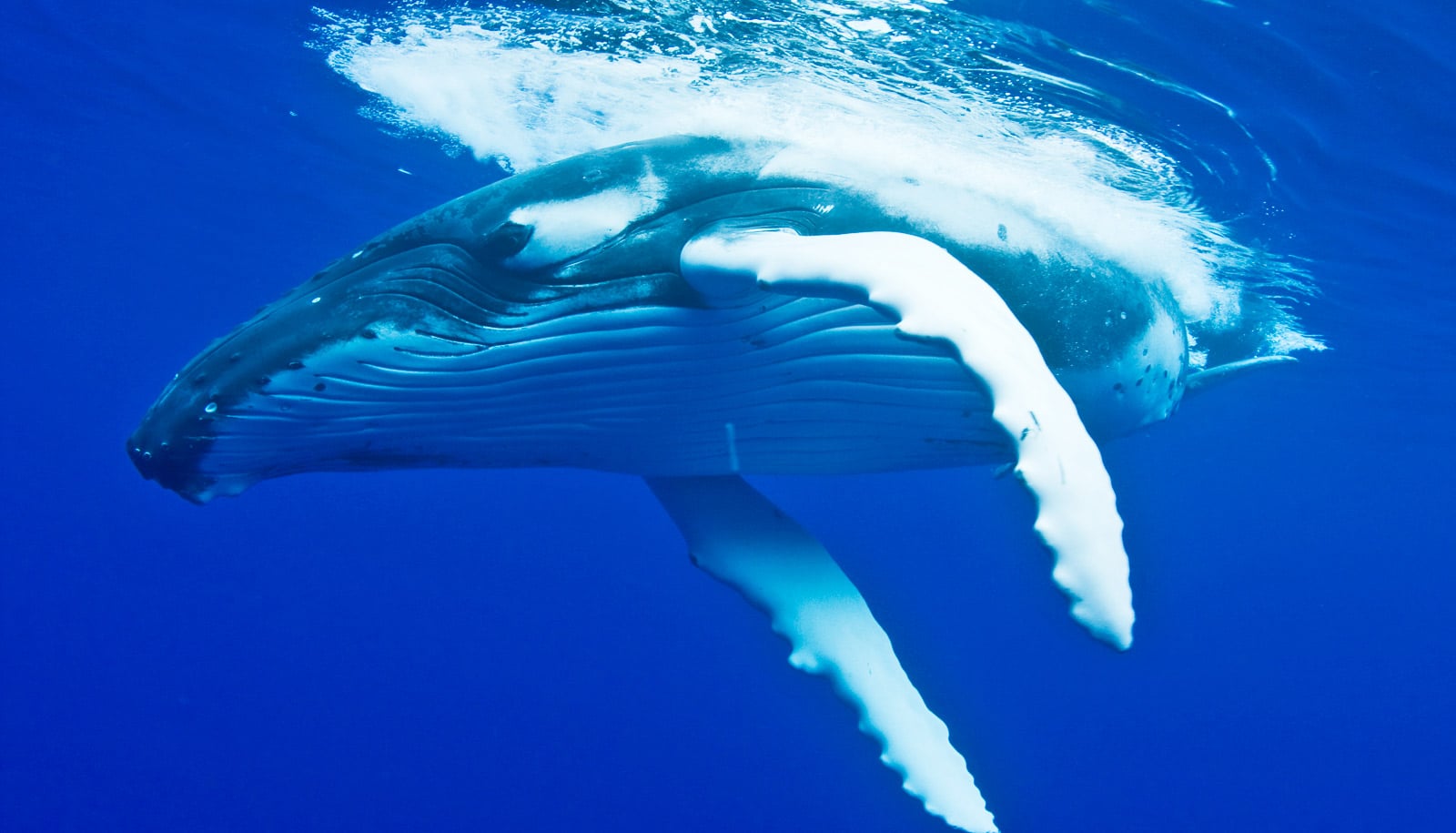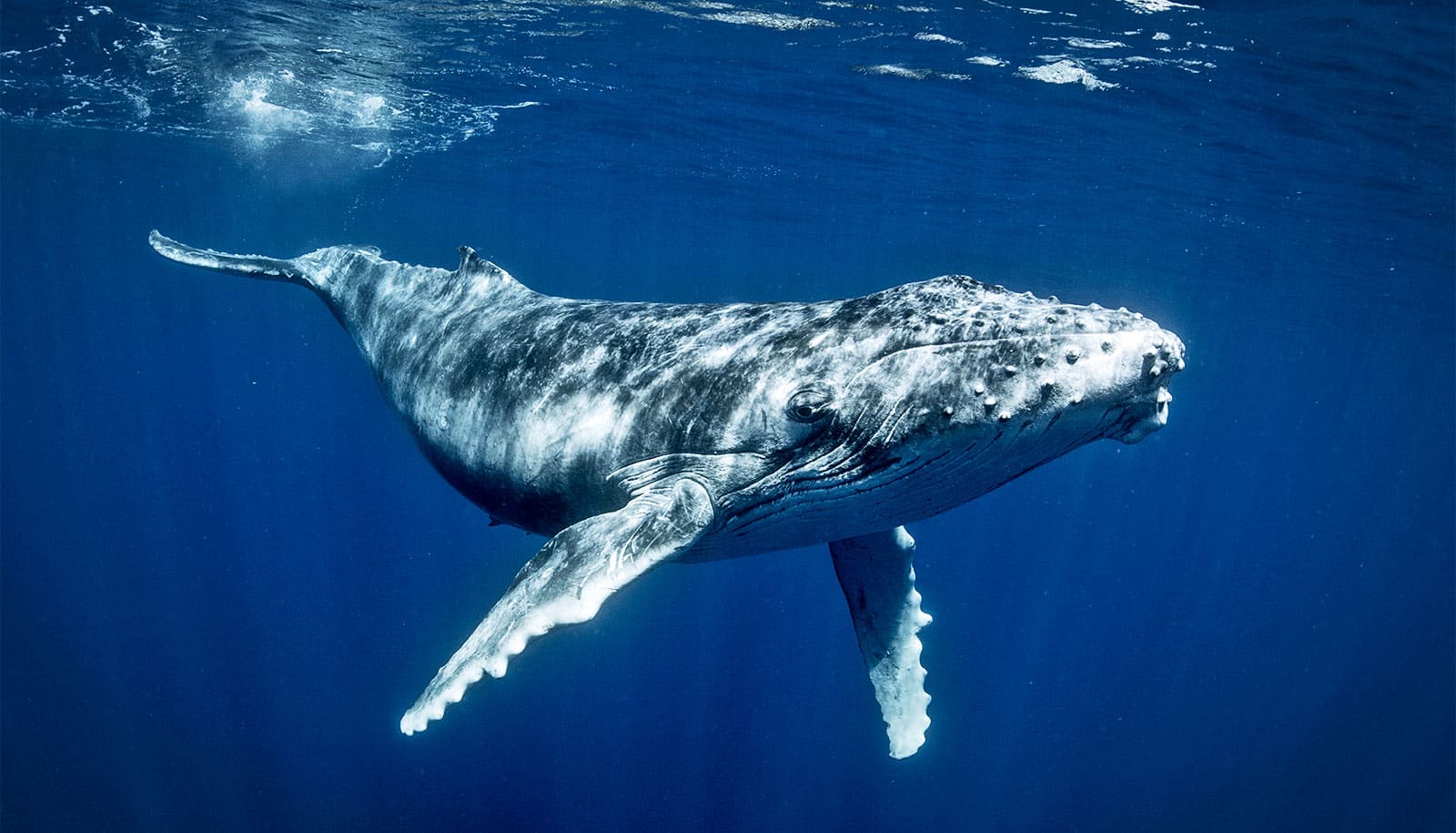Scientists have observed humpback whales flapping their foreflippers like penguins or sea lions do—something never seen before in whales.
When they attached recording devices to humpback whales, they were hoping to learn more about the animals move deep underwater.
“Whales power their swimming by using their muscular tails,” says Paolo Segre, a postdoctoral researcher at Stanford University. “However, in this case we have documented the first example of a whale flapping its flippers to move forward, using a motion similar to a bird flapping its wings.”
The discovery clarifies whales’ abilities and anatomy—and could advance bio-inspired design.
The foreflippers of humpbacks are bumpy and slender compared to the much shorter, smoother front flippers of other whales. The flippers are so distinctive, in fact, that the scientific name for humpback whales, Megaptera novaeangliae, means “big-winged New Englander.”
Scientists had previously thought foreflippers were mainly involved in steering—humpbacks are famously skilled at maneuvering. Video tagging technology, like what the researchers used in the Current Biology study, is relatively new, so scientists have only recently had the opportunity to test and expand on this hypothesis.
“It is probable that humpback whales are the only species that can do this because of the length and extensive range of motion of their flippers.”
“In the past, researchers have looked at the structure of the whale flipper from dead animals,” says senior author Jeremy Goldbogen, assistant professor of biology. “But for the first time we can see how this structure actually is used in a living whale–in its natural environment.”
The new footage suggests that whales generate a significant amount of thrust using hydrodynamic forces produced by the flapping. They also discovered the behavior is extremely rare. In hundreds of hours of video, some of which included groups of about 200 whales, they only saw the foreflipper flapping twice.
“It is likely very energetically expensive and only used for short bursts of acceleration,” says Segre, who is lead author of the paper. “It is probable that humpback whales are the only species that can do this because of the length and extensive range of motion of their flippers.”
The humpback whale is the most studied of all the whales, but the revelation of a new purpose for its flippers suggests there is much more to learn about them, he says.
The biomechanics of how the humpbacks are able to move their bodies could help in other fields, as well.
“By understanding how the body flexes, and how the flippers and flukes [tail] are used to maneuver, we will have a better understanding of the mechanisms used by the largest animals to attain high-performance locomotion,” Goldbogen says. “Therefore, our research has implications for the biomimetic design applications from enhanced performance of animals to mechanized submersibles.”
New video is like riding a whale while it eats
Researchers next plan to create a 3D movement and 360-degree panoramic video that would capture a whale’s entire body along with the environment around it.
Coauthors of the paper are from the Cape Town, South Africa environmental affairs department and from Cape Peninsula University of Technology. The US Office of Naval Research funded the work.
Source: Stanford University




